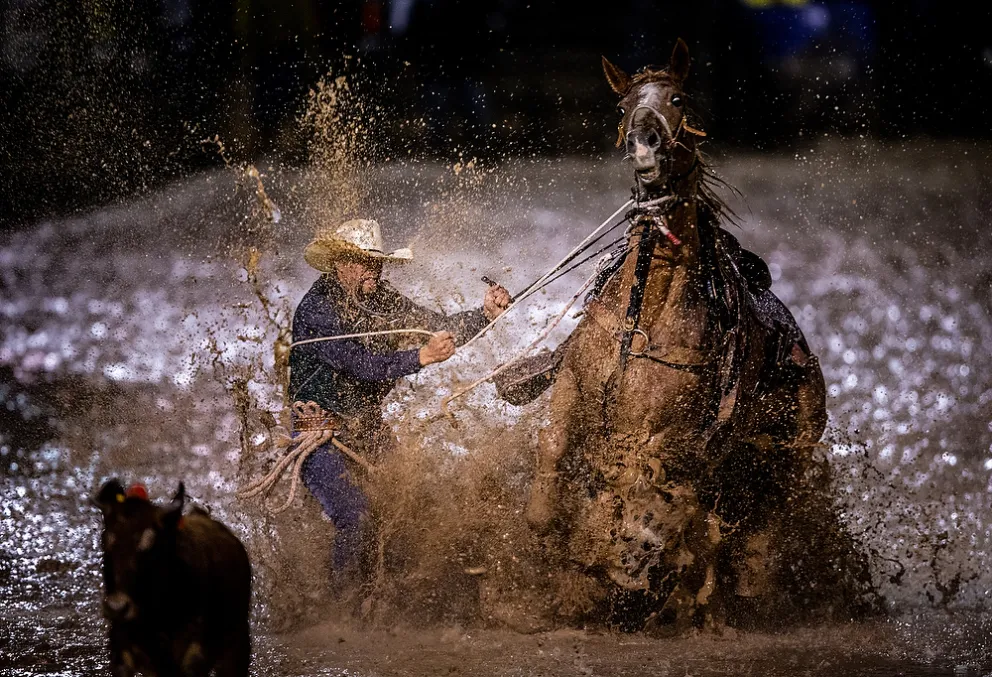
UPAA Blog 2021-22 #8- 12/16/21 (text and photos by Jay Drowns)
Jay Drowns is Assistant Director of Photography at Utah Valley University in Orem Utah. Jay worked at newspapers across the country and was a staffer at The Sporting News before joining the staff at UVU. His Sports category photo “Puddle Jump” was voted Best in Show in the November 2021 Monthly Image Competition. (See previous articles by Jay here, here, here and here.)
1. Quick tech stuff—camera model, focal length, exposure data, lighting used (if any):
•Canon EOS-1DX
•400mm f2.8
•1/640 @ f2.8, ISO6400
2. How did this shoot land on your calendar? Did you have a plan/vision prior to the shoot?
There is no straightforward way to answer this. In short, this collaboration between UVU Photo and the UVU Rodeo coach helps serve the students and give the photographer the best opportunity to make images.
For those who have not attended or photographed a rodeo, it is unlike most sports in many ways. The regular season includes eight rodeos, four in the fall and four in spring, with the College National Finals Rodeo in June. Each rodeo is a two-day event — Friday night for three to four hours, and all day Saturday. Although the rodeo team would love for us to photograph everything, we don’t have the staff to cover more than one event in the fall and spring. At each regular-season event, the student-athletes have two chances, once per day, to gain points. These points accumulate both for the individual and the team for weekly wins and qualifying for the CNFR end-of-the-year championships.
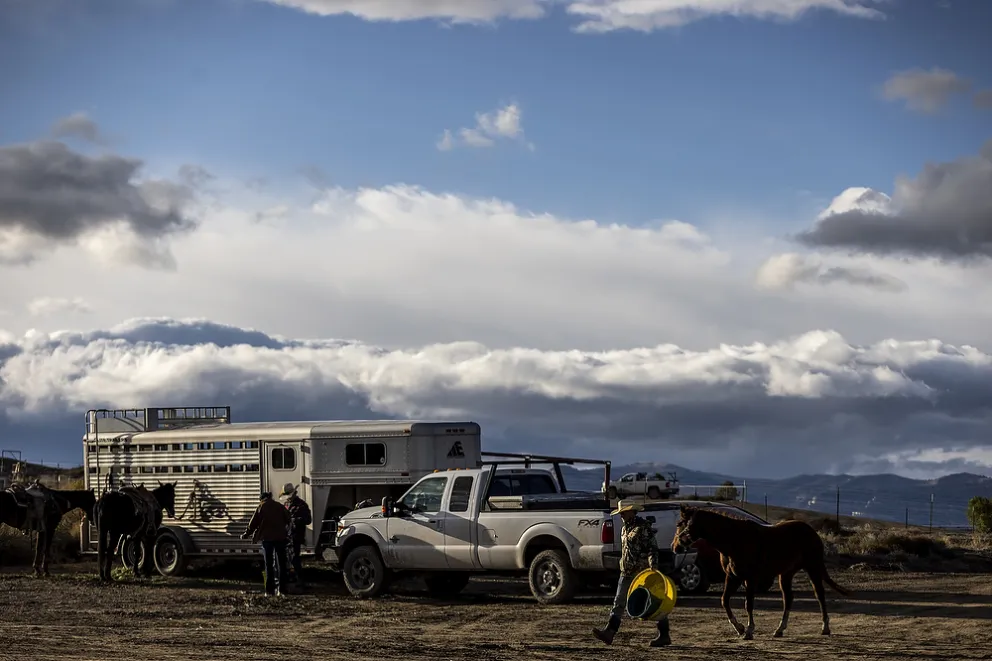
Not your typical team bus...
Unlike most college sports, rodeo events are measured in seconds, not minutes or hours. Additionally, the rodeo athlete has to contend with the unpredictability of the animals. Even the best horse can have a misstep that costs precious seconds, not to mention the rough stock in general. If you think getting tackled by a Linebacker is nerve-wracking, try taking a hit from a 2,000 lb. bull.
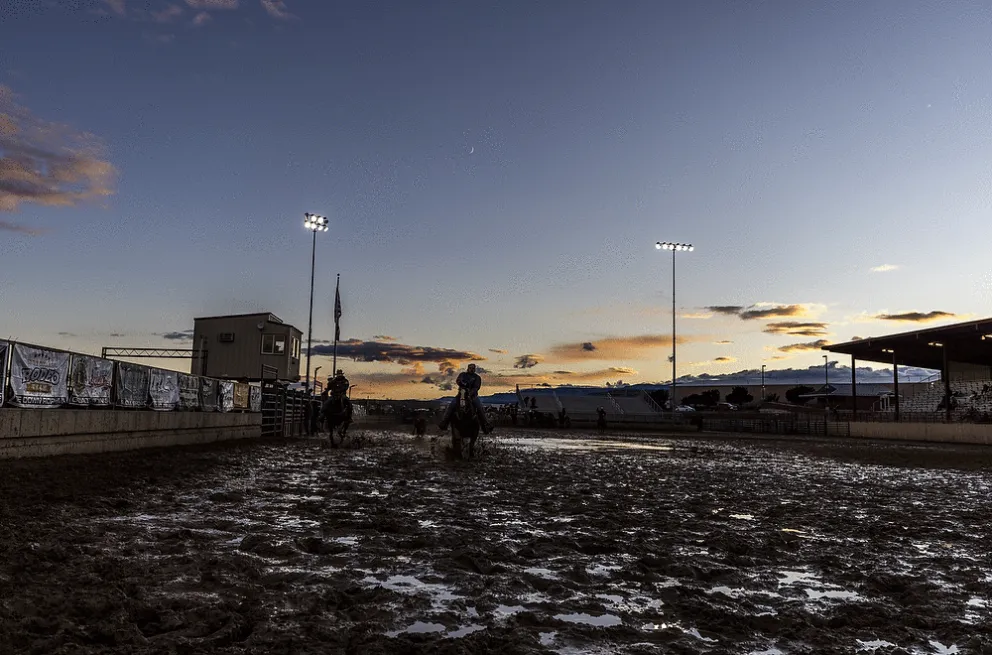
Ya know that "Uh Oh..." feeling when a wide receiver is bearing down on you? Imagine that with a horse!
3. Any unique logistics in making the photo? What sort of post processing (or not)?
The logistics in rodeo change for each event. For the roping events, my favorite spot to photograph is facing the starting chutes. Compared to a football/soccer field, the roping shoots are in one endzone and can run the length of the field. The fastest times are right out of the gate at 10-15 yards. A 400mm is just barely long enough to record the quick competitors from what would be the other endzone. On a normal night, I move up a little closer and sit just inside the fence near the rough stock chutes. This spot would be the 50-yard line facing the spectators, on what would be the other sideline.
Regarding this particular shot, a multiple-day monsoon soaked the ground, creating a muddy mess that would slow the horses at the start of their events. Knowing this, I set up outside the fence at the other end knowing that they would travel further and hoping they would hit the lake that had formed from the heavy rains in the arena.
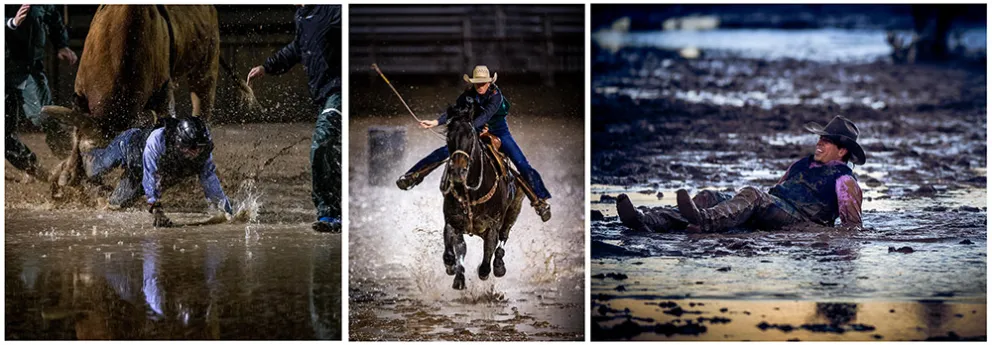
Rodeo + Rain = Some unique photo opportunities!
4. Did your vision before you made the photo come through in the final product? What (if anything) would you do differently if you could re-shoot this today?
This might not be the exact image that I had in mind, but I have been wanting to shoot a rain-soaked rodeo since the last time I photographed in Price, Utah about five years ago. Conditions were similar at that rodeo, but I was too caught up in the process of shooting the rodeo and neglected to look for great storytelling images. This time, I found several angles that illustrated the weather element in the competition story that I was able to capture.
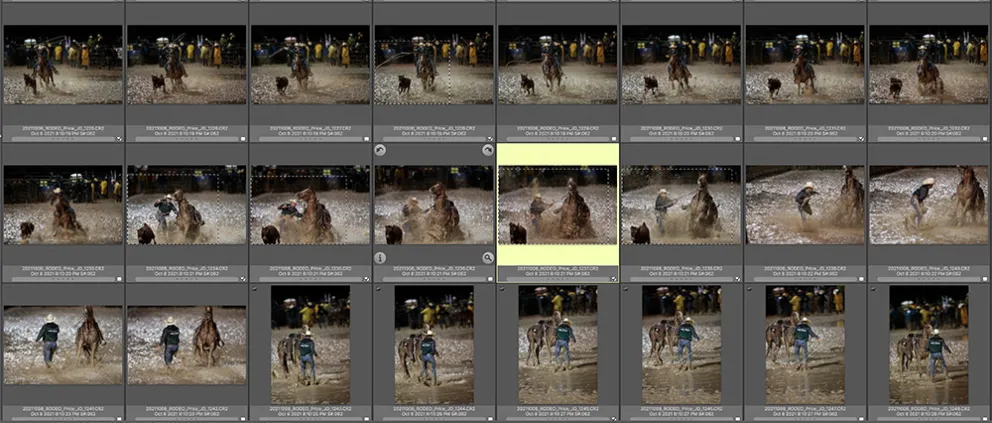
The sequence which included the winning image
Better light overall would make a big difference in this image. Shooting at 1/640 at 6400 ISO interferes with seeing the detail of the spray. A brighter backlight could also add to the drama of the moment. Most importantly, I wish the athlete would have roped the calf. Rhett Nebeker, the featured rider, is a strong competitor and a good person. It would have been nice to see him score on that run after surviving the muddy wash that hit him.
5. What do you do to keep yourself motivated and interested in your work?
I can tell you what doesn’t motivate me. All the paperwork and non-photo-related responsibilities that we have to do on a daily basis. If I could just spend all of my time making pictures and turn all the other work over to an assistant, I would have my dream job.
Of all the things I shoot, I find I am most motivated by rodeo. It’s visually compelling in both the action and culture that surrounds it. I grew up wearing cowboy boots until I discovered baseball and football as a kid. The suburb where I grew up (Southeast Idaho) butted up against farms. I’ve spent a lot of time around and in the cowboy and horse culture. Later as a newspaper photojournalist, I would beg, barter, or bribe to get the rare rodeo assignment.
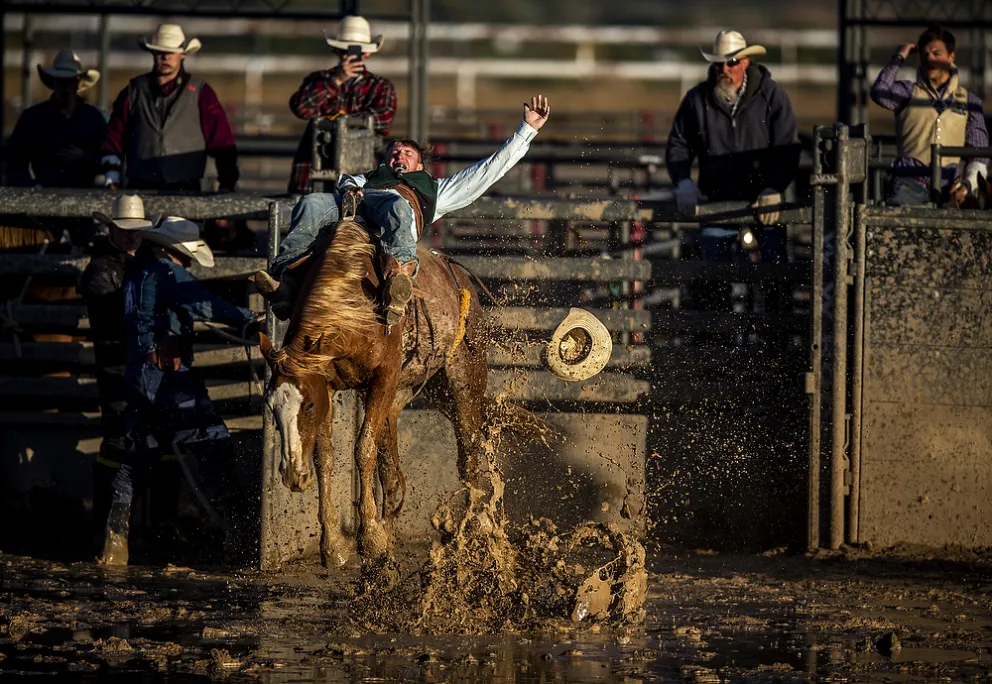
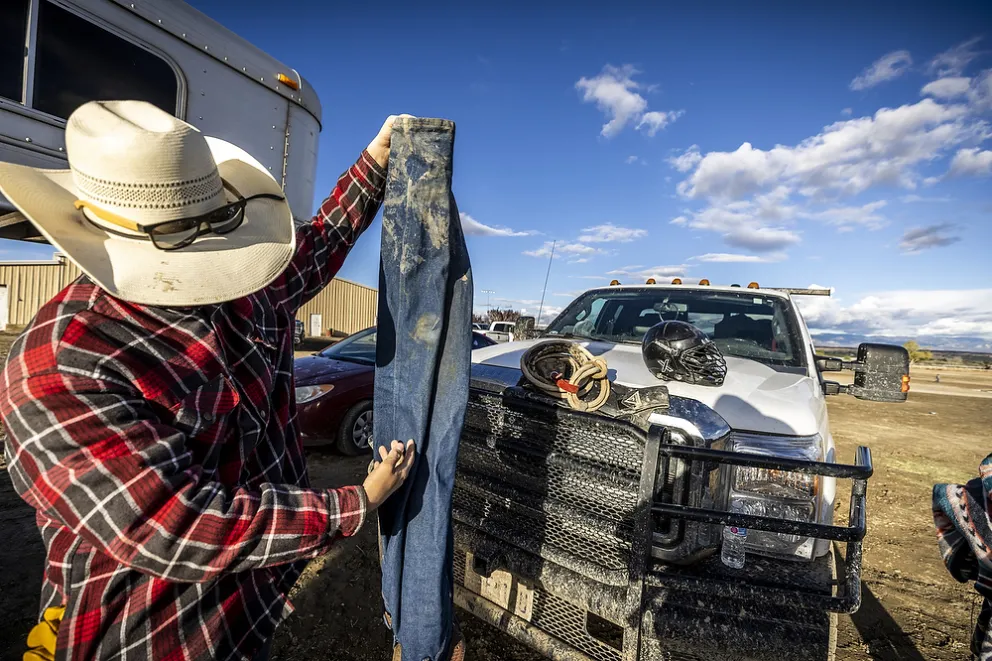
"It is visually compelling in the action of it as well as the culture that surrounds it."
Shortly after I came to UVU, I was assigned to shoot a marketing campaign for the rodeo team. We had great success in letting the region know how they placed as a team and as individuals at nationals. That success has led to more collaborations with team coach Shane Draper.
After getting to know the team that first year, I found out that they are not an NCAA sport but a club. Because of that, they were severely limited in their funding. Comparing the cost-to-athlete ratio of rodeo to other sports is like comparing the cost of running a lemonade stand to a brick-and-mortar business. Each rodeo athlete needs a horse, saddle, and transportation for the animal. They feed and care for them on a daily basis. They concern themselves with the health of their animal as much, if not more, than themselves.
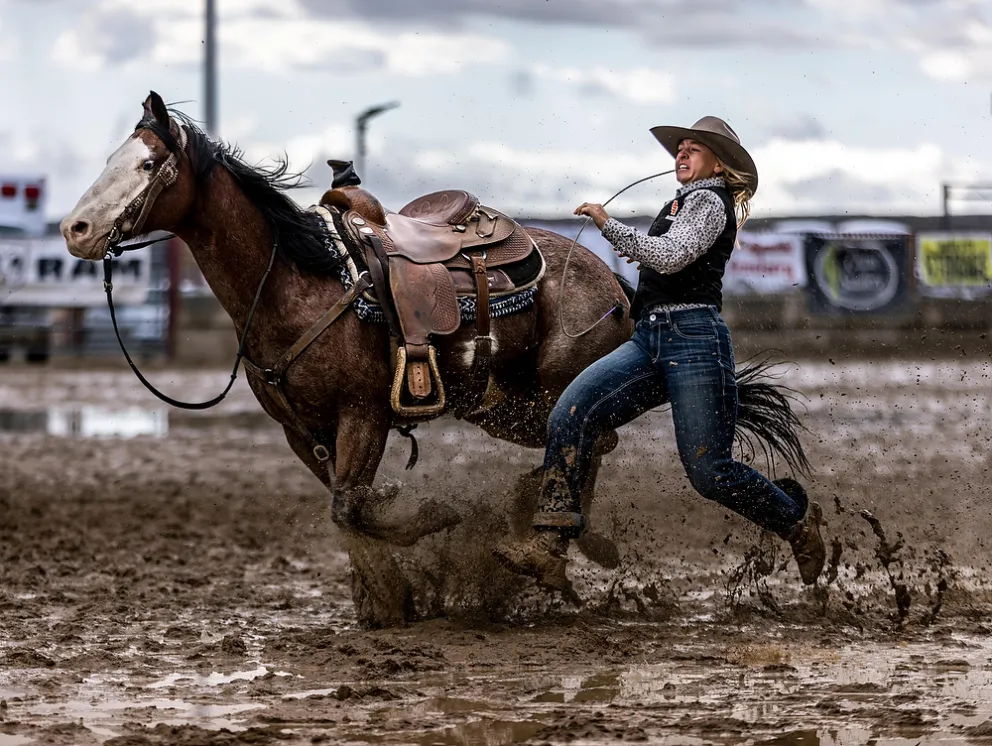
"Unlike most college sports, their events are measured in seconds not minutes or hours."
Coach Draper mentioned they were limited as a team on the number of scholarships available from the lack of funding. As we continued to talk, we hatched an idea to create a fundraiser. For a few years before the stock photography market crashed, we set up a series of stock shoots — charging photographers that came to Utah to photograph staged rodeo events and scenes of western culture. Thanks to the connections of a friend, we hosted photographers from every corner of the world. For the few years that we did it, we were able to provide scholarships to an additional ten student-athletes each year.
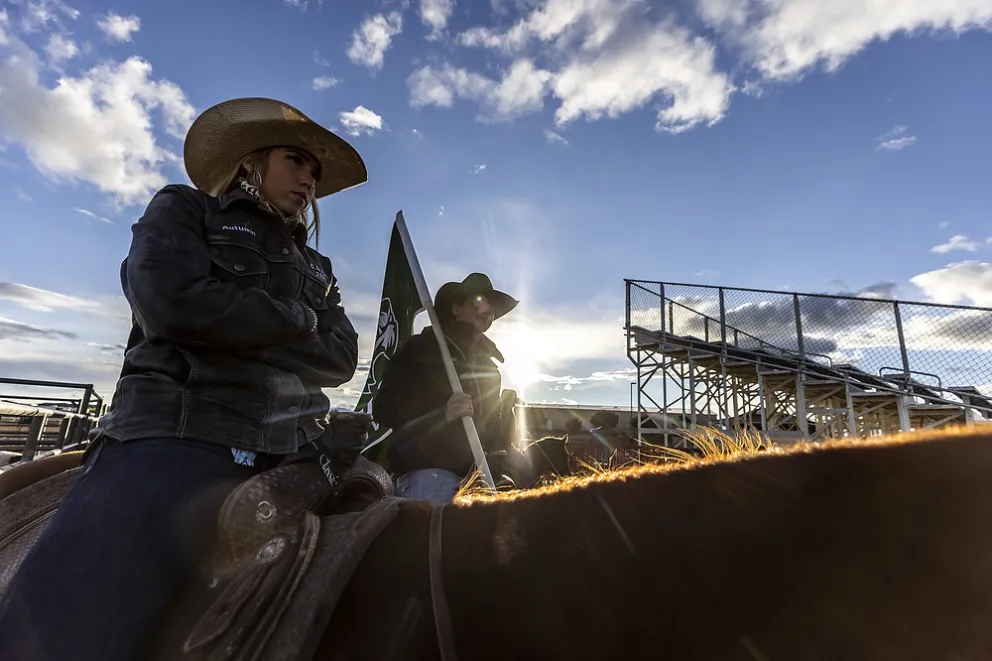
"The rodeo athlete has to concern themselves with the health of their animal as much if not more than themselves."
The scholarship plan moving forward, if we can get past pandemic restrictions, is to offer a workshop and photo safari for photography enthusiasts. Based at a working ranch in central Utah, the participants will photograph UVU Rodeo Team members working with animals and staging a rodeo, all while experiencing some cowboy culture. We hope this turns into a self-perpetuating program to support the team in the long term.
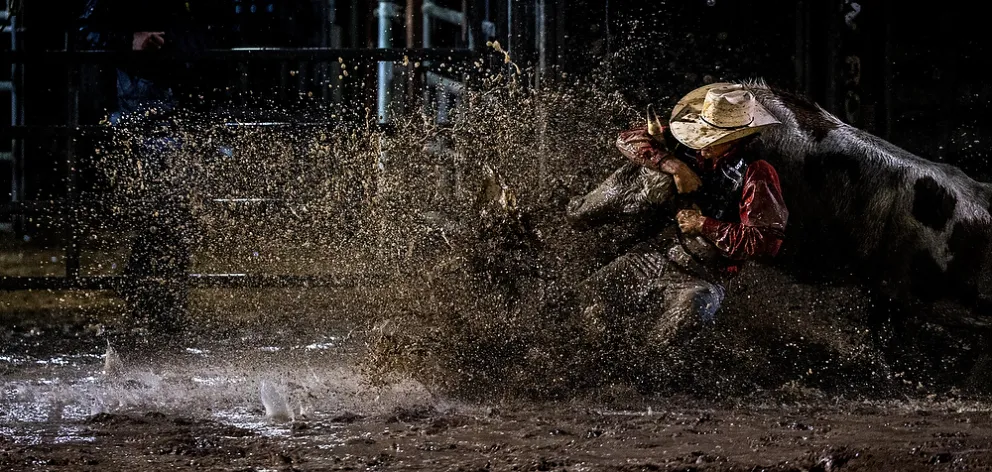
"I feel I found several angles that illustrated the weather element in the competition story."
Please don’t misunderstand my rant as a reach for attention. Rather, I use it as an example of how much I am motivated by the team and their story to help in the ways I can. I wish I could take credit for it as some altruistic contribution, but the reality is it gives me more opportunities to take more photos and feed my photo addiction. In the end, I think I get more out of it than the student-athletes.
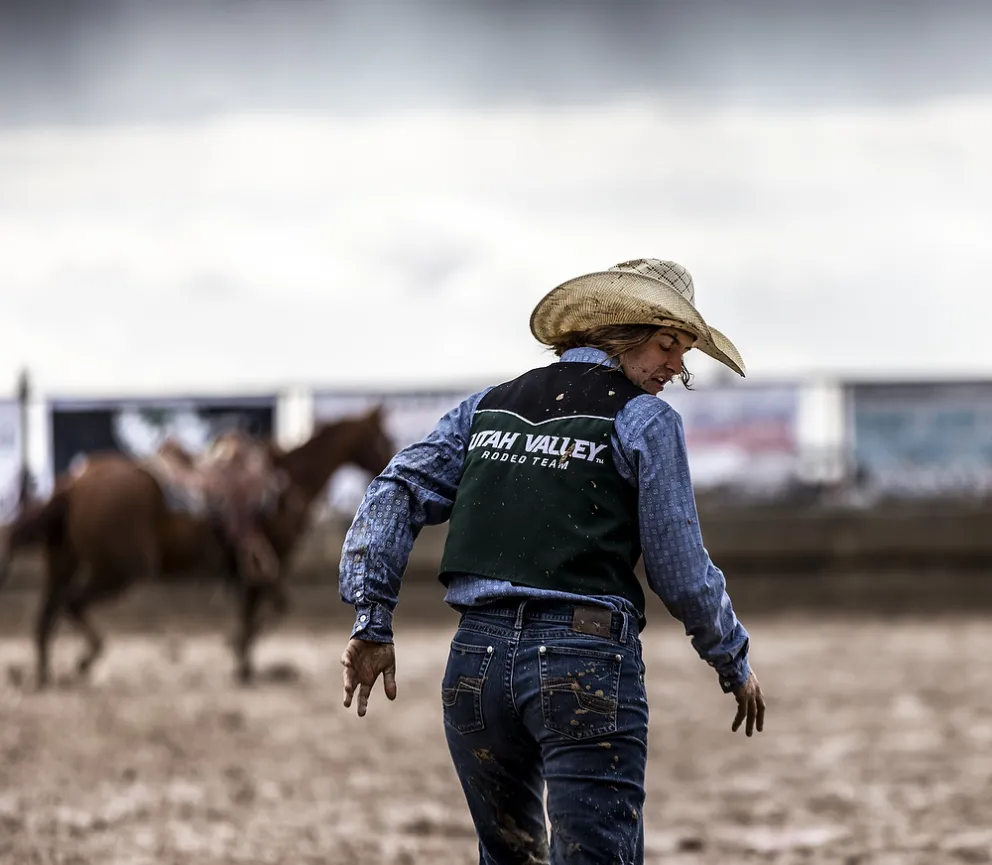
______________________________________________
"My friends took me to my first rodeo last week. I kinda got roped into it." Thanks for reading, submissions and suggestions always welcome. Email editor Matt Cashore, mcashore@nd.edu. Follow UPAA on Instagram, too!